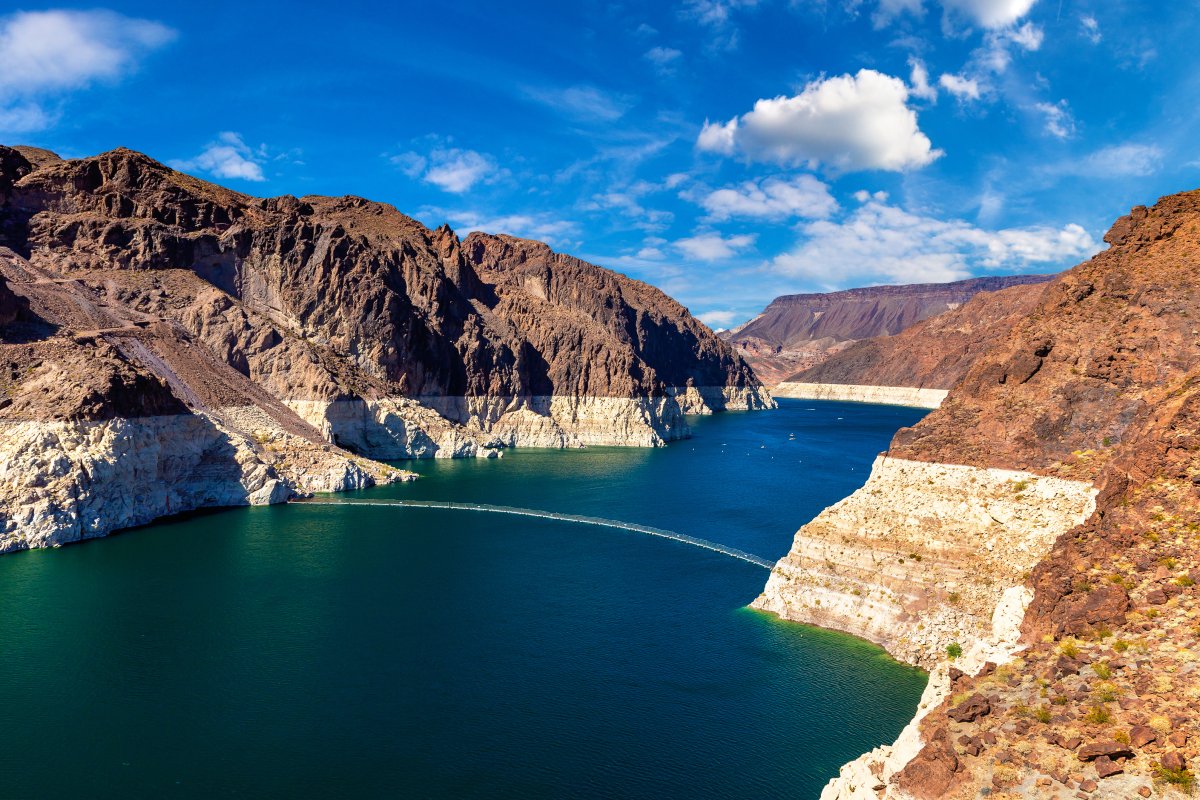Lake Mead, the largest reservoir in the U.S., has made national headlines recently due to its rapidly declining water levels.
The reservoir across Nevada and Arizona is formed by the Hoover Dam on the Colorado River, and provides electricity for hundreds of thousands of people living across the area. Due to the ongoing drought in the western United States, it has been hurtling towards dead pool level—which could be catastrophic.
However, its water levels have now risen for the first time in three years.
On July 27, the lake's water levels were at 1,040.71 feet—the lowest they have been since the 1930s, not long after it was first created. The area was then hit by the wettest monsoon season the Las Vegas Valley has seen in a decade.
From July 27, rain was falling every day, the Las Vegas Review Journal reported. As of August 15, the lake's levels were at 1,042.29 feet, meaning water levels rose by 18 inches.

Some areas saw more than a half inch of rain in just 10 minutes, according to the report.
Southern Nevada Water Authority spokesman Bronson Mack told the news outlet that rain will either soak into the ground, or run through the Las Vegas Wash into Lake Mead.
Lake Mead has been evaporating due to the ongoing megadrought gripping the western United States. Since 2000, around the time the drought began, the water levels have fallen by 170 feet.
Rainfall isn't the only factor at play with Lake Mead's water levels. They would usually fluctuate seasonally due to winter snowpack flowing down from the Rocky Mountains.
But due to climate change, seasonal weather patterns are becoming harder to predict.
Despite the recent rise in water levels, the lake is still only at 27 percent capacity.
"[Lake Mead] is all about storage [...] and it's about seasonality of precipitation. And snow. So what happens is that while people think the lake is where [the] West stores its water, in fact, the much bigger, important storage place is the mountains and snowpack," Robert Glennon, a water policy and law expert and emeritus professor at the University of Arizona, told Newsweek.
If the lake's water continues to dry up, there is a possibility that the dam's turbines will no longer be able to generate power. This would happen if the lake reached a reservoir elevation of 895 feet, a level where water would not flow past the dam.
"Canyons in the West all are pretty much in the same shape. They're very wide at the top and very narrow at the bottom. Think martini glass or the letter V. And right now both reservoirs are way down in the V going down to the bottom of the glass. So each foot of elevation has less water in it. I don't think people really understood how quickly it could start to drop once it got down to the bottom of the glass," Glennon said.
Uncommon Knowledge
Newsweek is committed to challenging conventional wisdom and finding connections in the search for common ground.
Newsweek is committed to challenging conventional wisdom and finding connections in the search for common ground.
About the writer
Robyn White is a Newsweek Nature Reporter based in London, UK. Her focus is reporting on wildlife, science and the ... Read more
To read how Newsweek uses AI as a newsroom tool, Click here.








